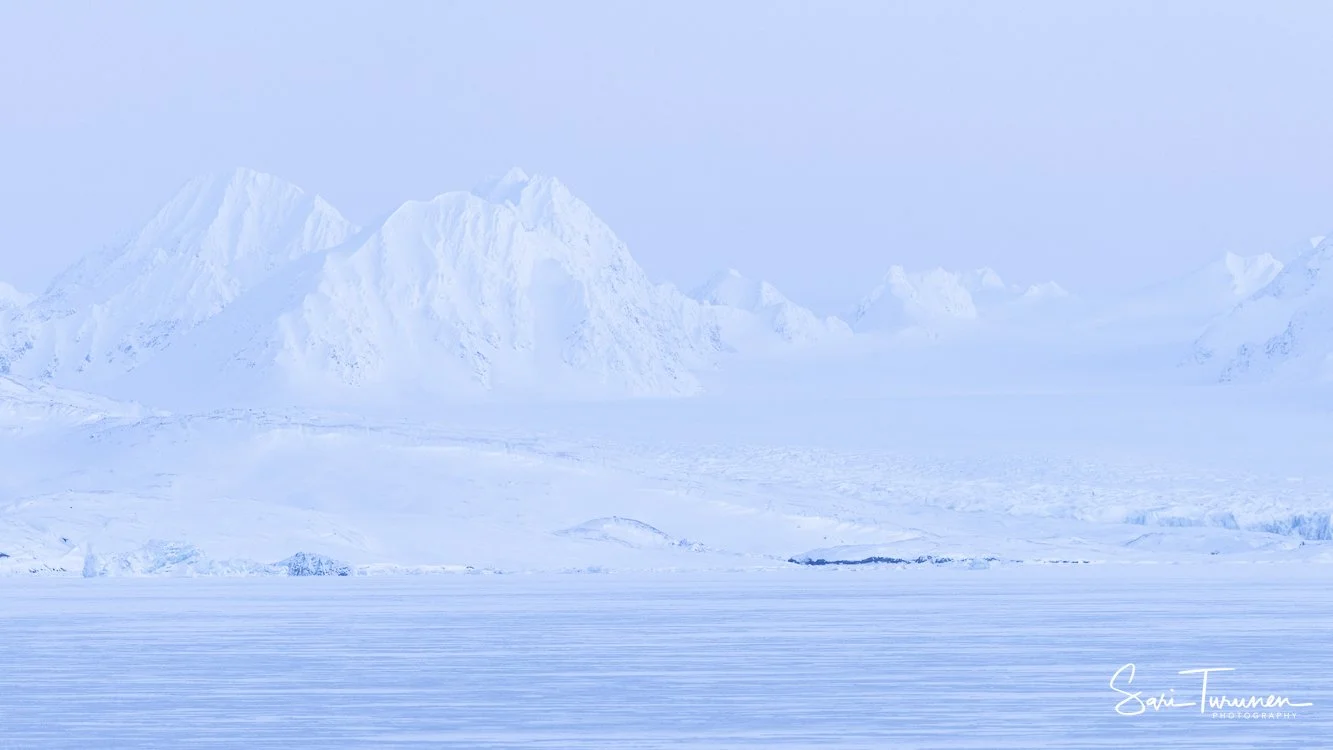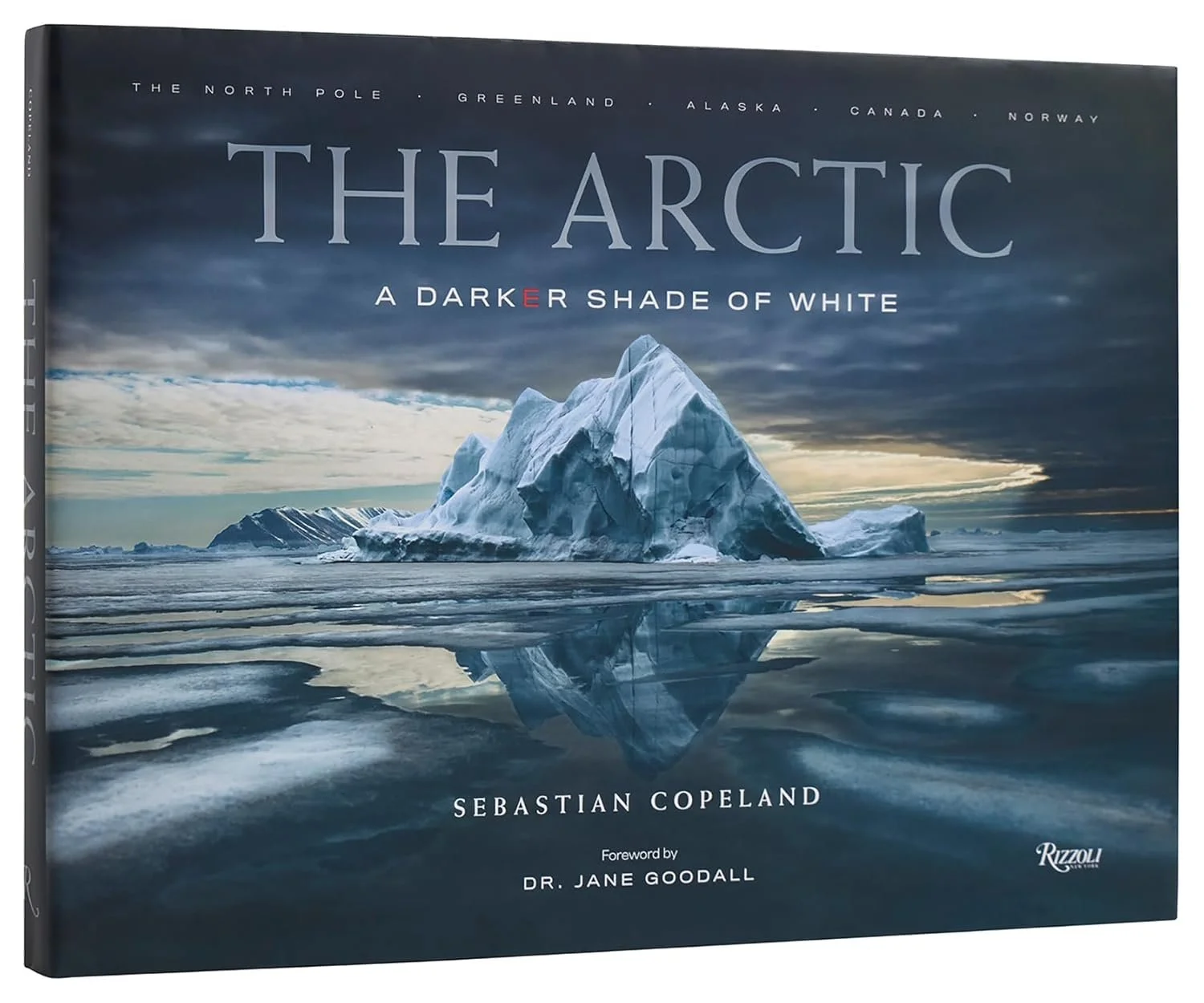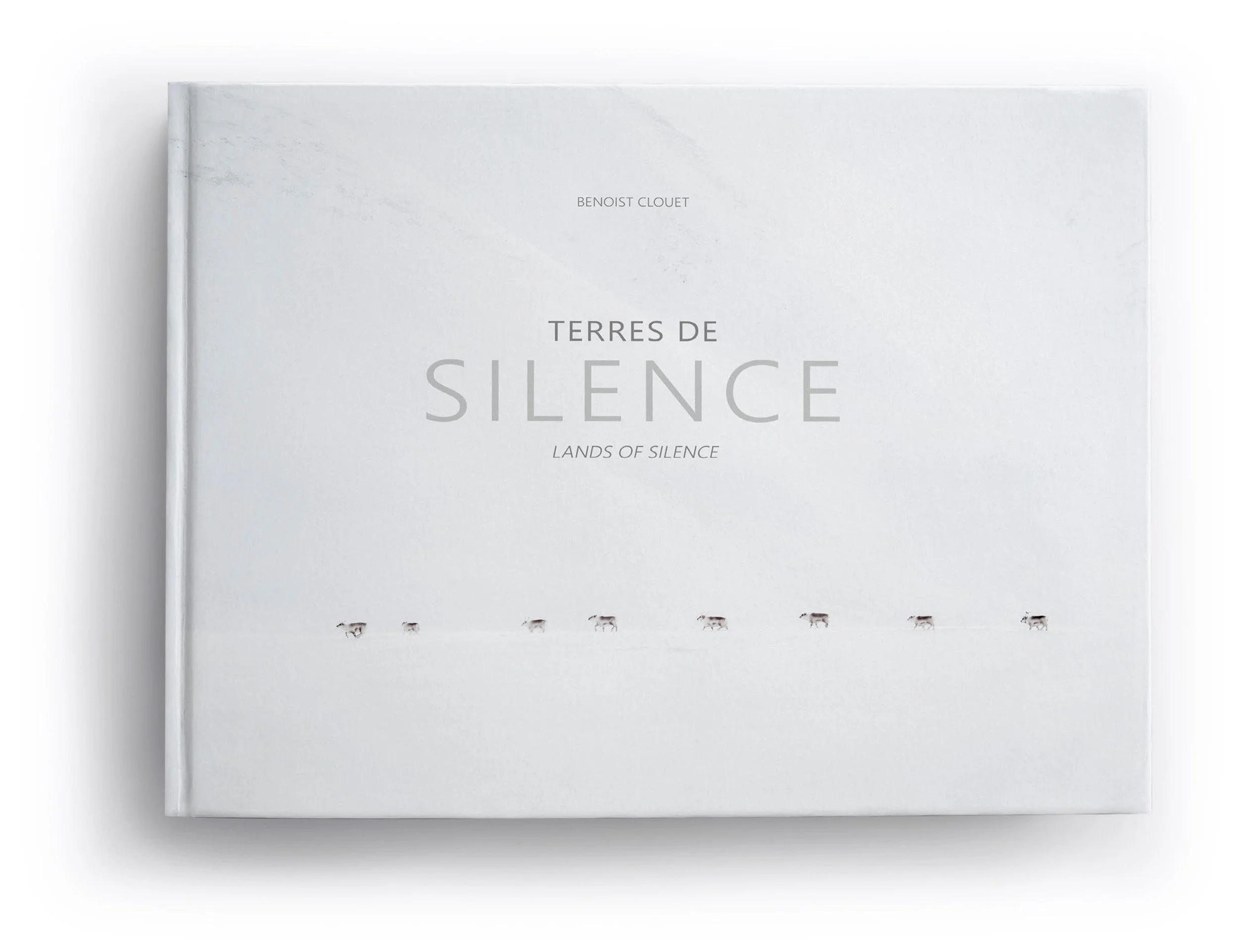Part Four: Pages of Silence, Pages of Light
A Map of Influence
Some books don’t just inspire—they shift something inside you. They open a door, or hold up a mirror. They become quiet companions, offering a kind of unspoken dialogue across time, place, and creative intent.
The books I’m sharing here aren’t a comprehensive list. They’re simply the ones that have stayed close in recent months. Each of them approaches the photographic book differently—some through abstraction, others through immersion or emotional atmosphere. What binds them, for me, is a sensitivity to silence, to space, to feeling. They don’t shout. They invite.
Winter Night in Svalbard
As I continue working on my own book, these works have become touchstones—not to emulate, but to reflect with. They remind me that a photobook can be many things: a story, a sensory journey, a poem, or simply a space where images breathe and speak in their own language.
Vincent Munier – Arctique
There’s a kind of hush in Arctique—not just the literal silence of snow-covered landscapes and elusive wildlife, but a visual quietude that invites the viewer into a deeper kind of seeing. Munier, whose work I’ve followed with admiration for over two decades, distills the Arctic into something not only beautiful, but meditative. The images are stripped down—often black and white or with subdued tones—and presented with generous white space that amplifies their stillness.
Arqtique by Vincent Munier
There’s no text, no chapters, no page numbers. Just the rhythm of light: a gentle arc from soft tonal atmospheres to the clarity of harsher illumination. His signature is unmistakable—graphic compositions, intuitive timing, and an almost spiritual reverence for wildlife. The close-up portraits of birds and animals, nestled within vast, often abstracted landscapes, speak to an intimacy and patience that few photographers sustain.
Arctique feels less like a traditional photobook and more like a quiet offering. In relation to my own book, I’m particularly drawn to how Munier lets the images breathe—how the sequencing follows a poetic logic rather than a narrative one. It reminds me that silence, space, and trust in the image can be enough. That not every journey needs explanation.
Sebastian Copeland – The Arctic: The Darker Shade of White
If Munier whispers, Copeland immerses. The Arctic: The Darker Shade of White is expansive, cinematic—where Munier pares things down to gesture and presence, Copeland builds a vast, intricate tapestry of ice, light, and urgent context. As an explorer who has skied across Greenland and reached both poles, Copeland brings a firsthand, physical intimacy to the Arctic environment. His images are often sweeping and immersive, inviting the viewer to step inside the space, to feel the scale and fragility of these remote geographies.
The Arctic - A Darker Shade of Ice by Sebastien Copeland
The book is full of texture—both in the photographs and in the narrative. Icebergs take on monumental forms, lit from above and below, captured in their sculptural complexity. Where Munier’s palette leans toward minimalism, Copeland reveals nuance within the white: blues, greys, the shimmer of meltwater, the shadow of storm. There's a strong presence of voice too—text woven through the pages, contextualizing the photographs within the climate crisis and his own journeys.
I find it fascinating how both Copeland and Munier are drawn to the same region, yet create entirely different experiences of it. Where Munier’s Arctic feels like an inner world, Copeland’s is a confrontation—with beauty, with loss, with scale. In thinking about my own book, I reflect on this polarity: between abstraction and immersion, silence and voice, poetic atmosphere and grounded narrative. Copeland’s work pushes me to consider how the environment can be both subject and message—how visual awe can carry an urgent call beneath its surface.
Benoist Clouet – Terres de Silence
Terres de Silence feels like a journey through memory—one made not just through place, but through atmosphere. Having shared some travels with Benoist, I recognize fragments of those landscapes, small moments that quietly resurface in the book’s sequences. Yet even for those unfamiliar, the tone is intimate and introspective. The palette is restrained—muted whites, greys, blues—giving the photographs a spaciousness, a kind of still breathing. Snow threads through the entire work, as material and metaphor.
Lands of Silence by Benoist Clouet
What sets this book apart is its structure: it begins with thematic, nearly poetic chapters—White Day, Tracks in the Snow, Feel the Distance—each introduced with a paragraph of text. These early sections are more meditative, inviting the reader to experience the Arctic, not just as a location but as emotional space. Later, the book shifts into more geographic and descriptive territories (Deception Island, Terra Australis, The Wings of Ice), yet it never loses its contemplative voice.
Among the most striking images are those shrouded in blizzard, and those where wildlife emerges from darkness—silhouettes carved out of near-void. These moments stay with me. In relation to my own book, Terres de Silence reminds me of the power of transition—not just across land, but across emotional registers. It opens the possibility of building a photographic narrative that is both formally structured and lyrically loose, where mood carries as much weight as message. There’s a quiet courage in letting stillness speak.
Erik Malm – A Journey of Love
Erik Malm’s A Journey of Love reads like a visual meditation—subtle, personal, and deeply attuned to the emotional register of place. Long before the term "ICM" (Intentional Camera Movement) became widely known, Malm had already begun shaping a unique photographic language rooted in gesture, atmosphere, and movement. This book brings that language into full maturity.
A Journey of Love by Erik Malm
Photographed entirely in Spain, the work isn’t about Spain per se—it transcends location. While the chapters are named after specific places, they serve more as quiet markers along a path that leads inward. The landscapes, birds, flowers, and wildlife are rendered not in documentary clarity, but in soft abstractions—glimpses, pulses, echoes. Color is used expressively: sometimes rich and saturated, sometimes faint as breath, always considered.
There is great care in the pacing of the book. Ample space between images allows each photograph to resonate. Nothing feels rushed. The result is a sense of calm unfolding—a slow visual rhythm that mirrors the emotional journey it proposes. The viewer is not being shown a place, but invited into a state of being.
What I find compelling is how this book embodies both personal narrative and universal emotion. It doesn't try to anchor the viewer in facts or context, but rather opens a space for feeling and interpretation. In relation to my own book, A Journey of Love affirms that the most powerful storytelling can often be the most subtle. That atmosphere, when handled with care, can carry meaning just as strongly as narrative. It reminds me to trust in softness, in intuition, and in the quiet pull of beauty.
Drawing My Own Line
Spending time with these, and other, books has reminded me that every photobook is, at its core, a conversation—not only between images, but between artist and viewer. Each of these works approaches that conversation differently: some speak in whispers, others in immersive tones, some with language, others in pure visual rhythm. Together, they sketch a map of what’s possible—not only photographically, but emotionally.
As I move deeper into the process of completing my own book, I carry these voices with me. Not as guides to follow, but as kindred spirits who’ve charted their own paths through the terrain of light, silence, and feeling. Their presence is a kind of reassurance: that there is room for nuance, for ambiguity, for slow, poetic seeing.





